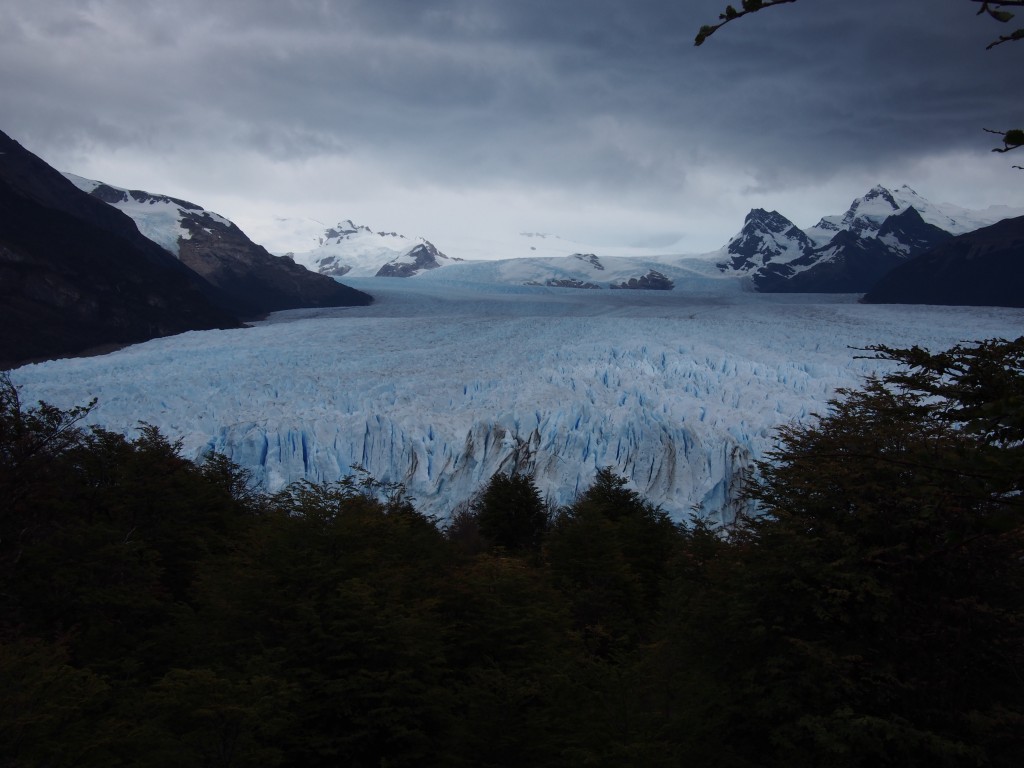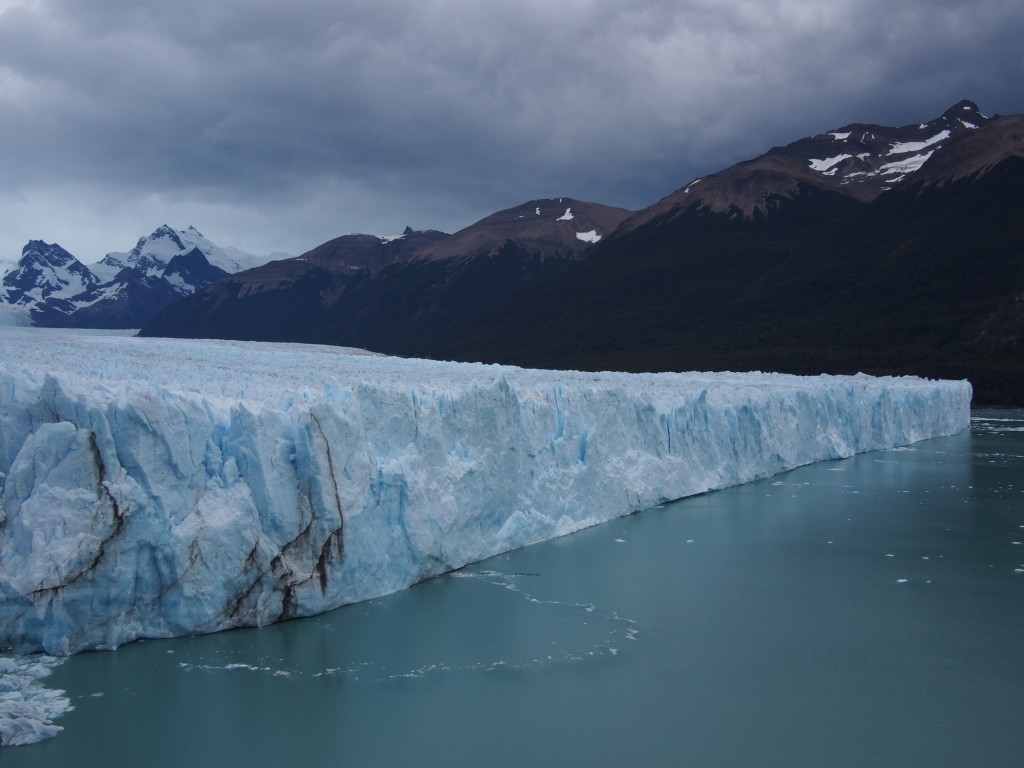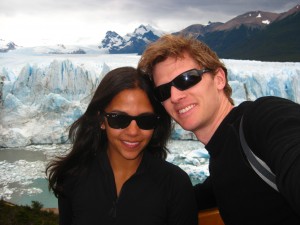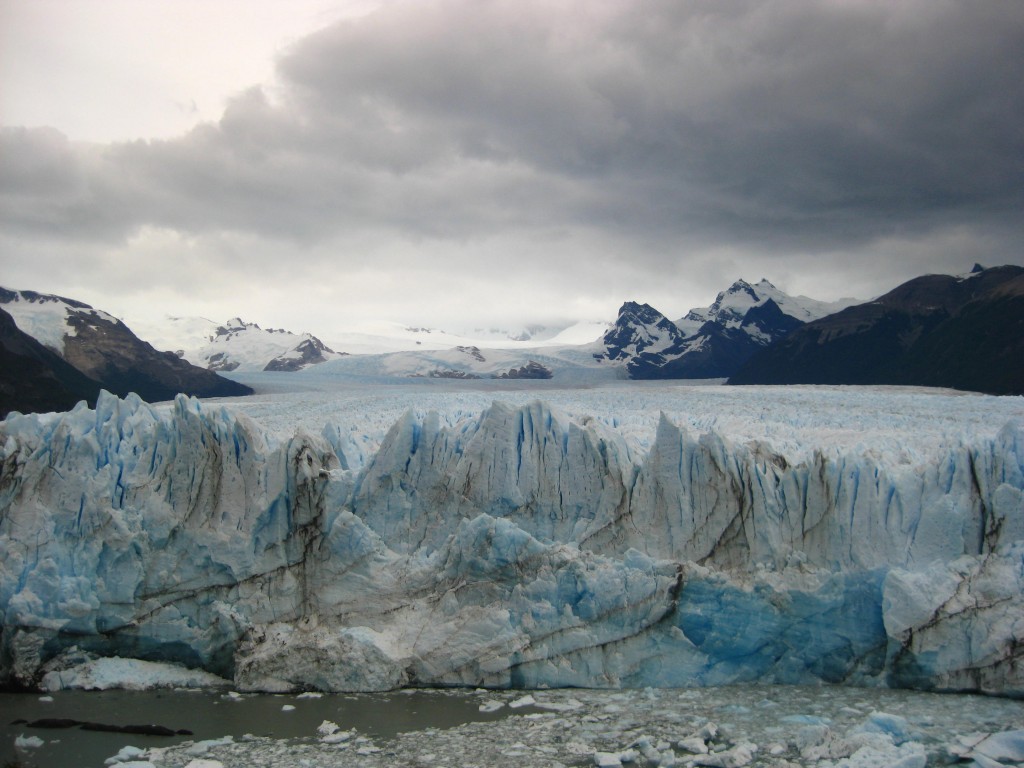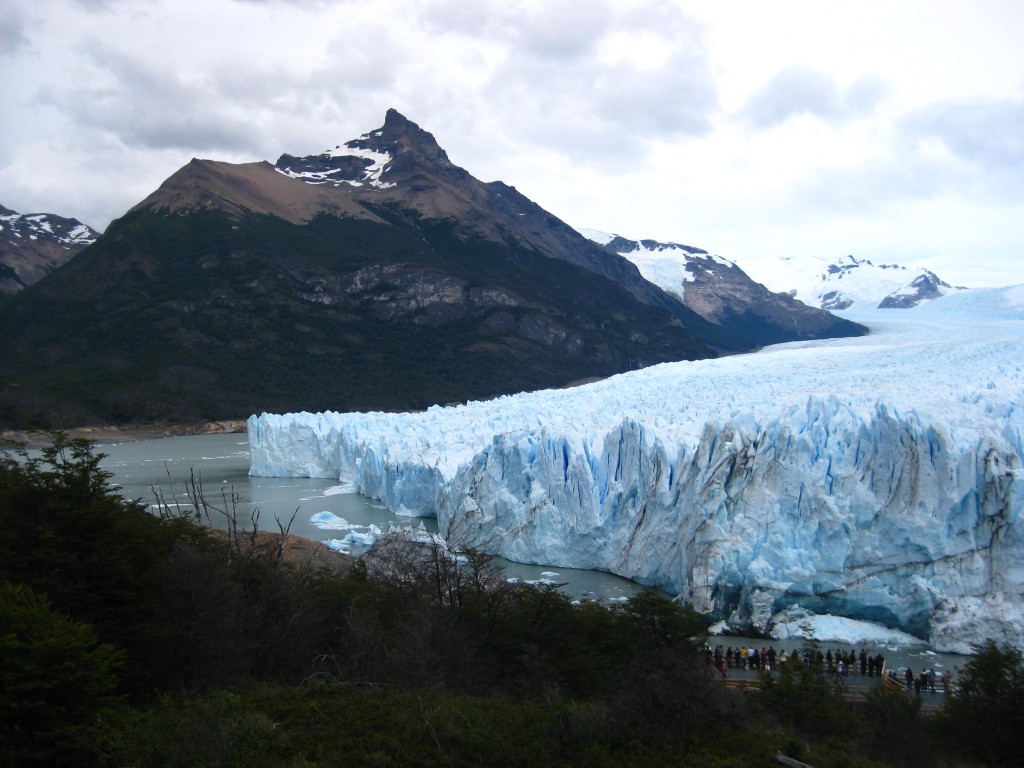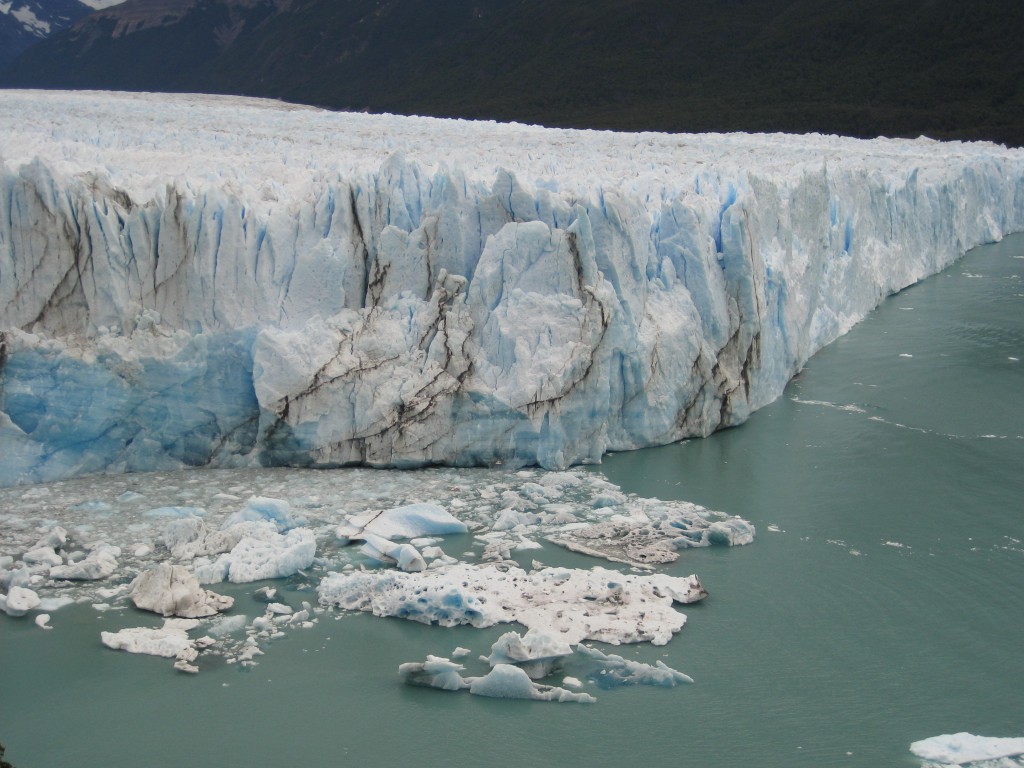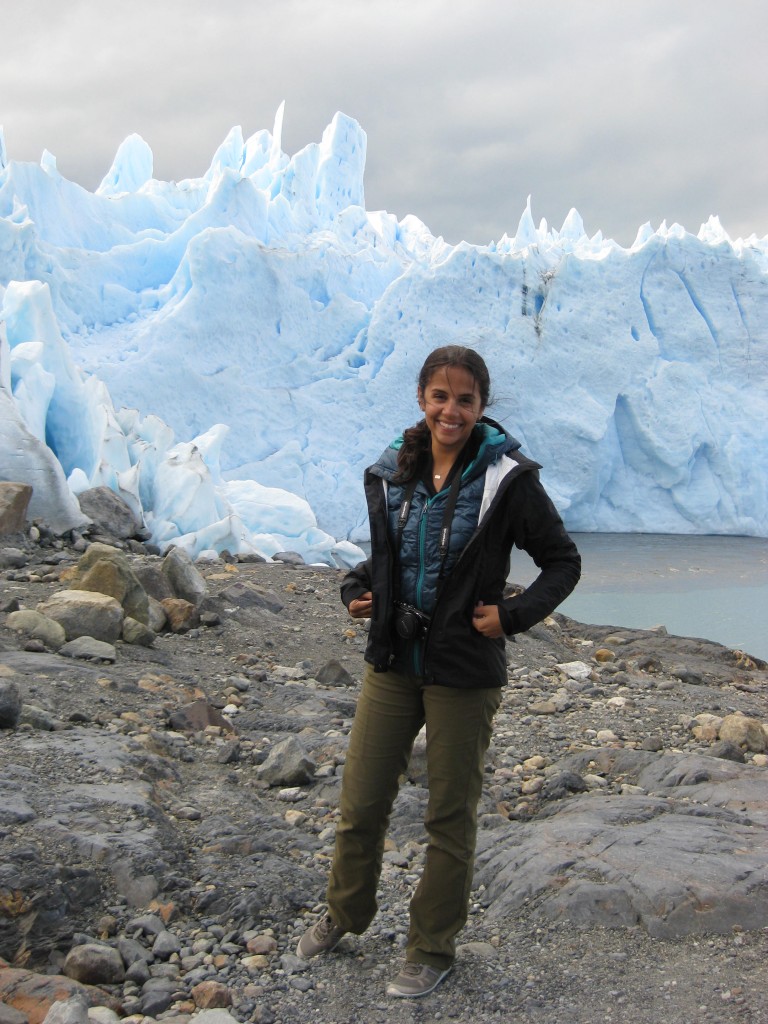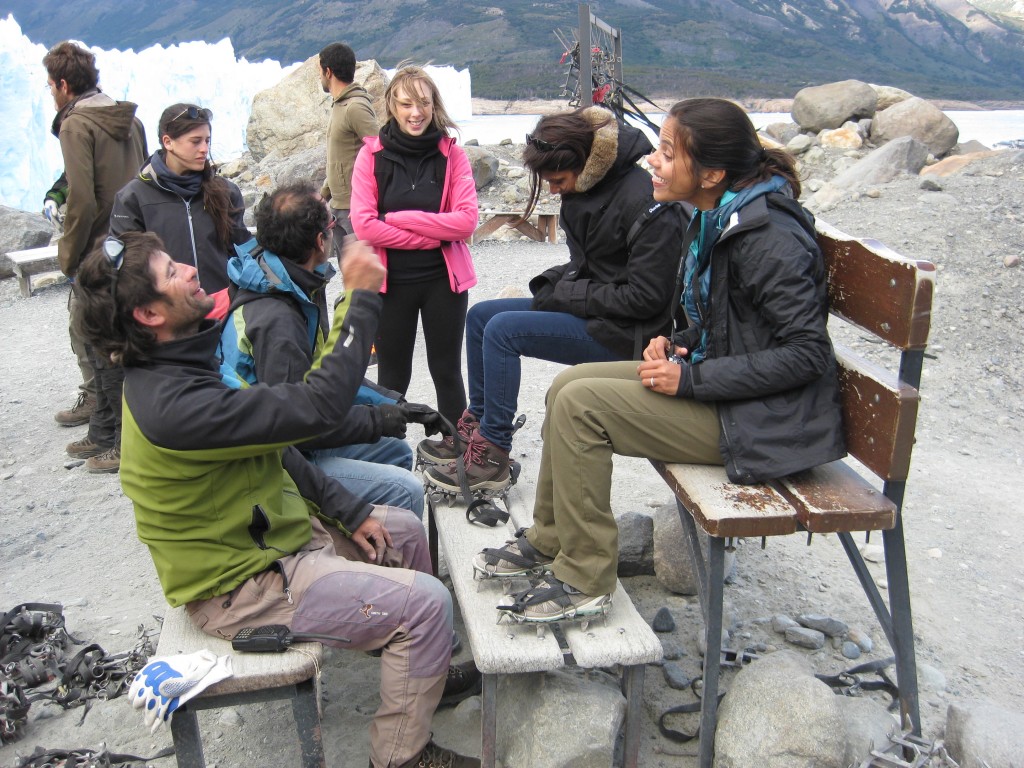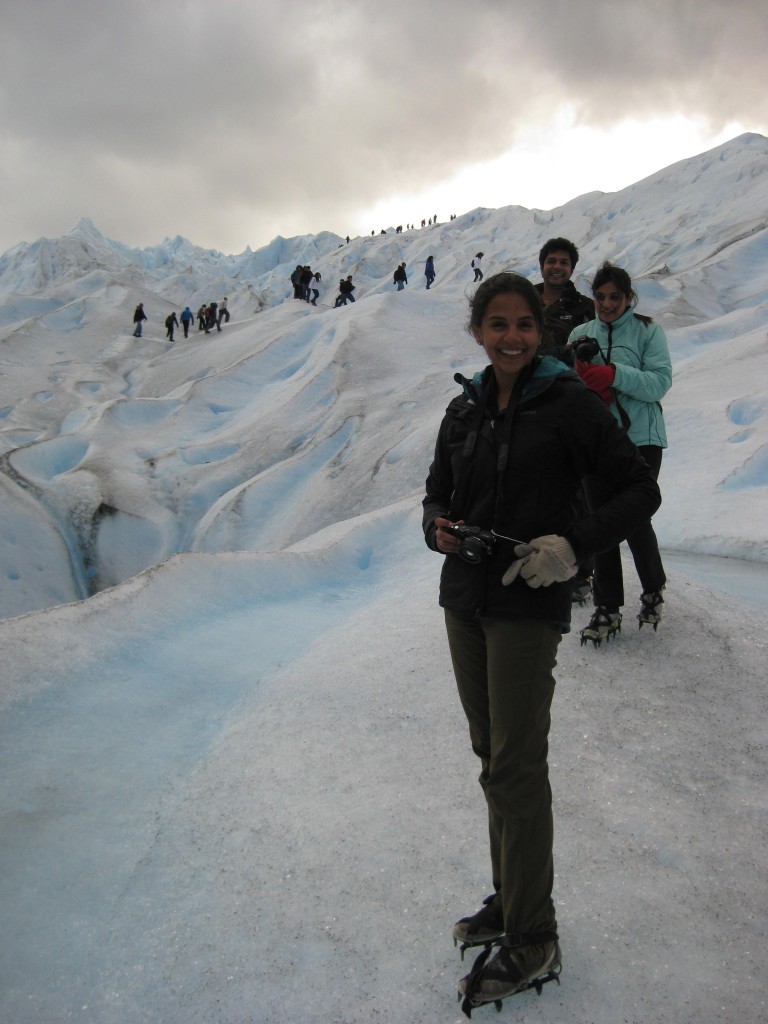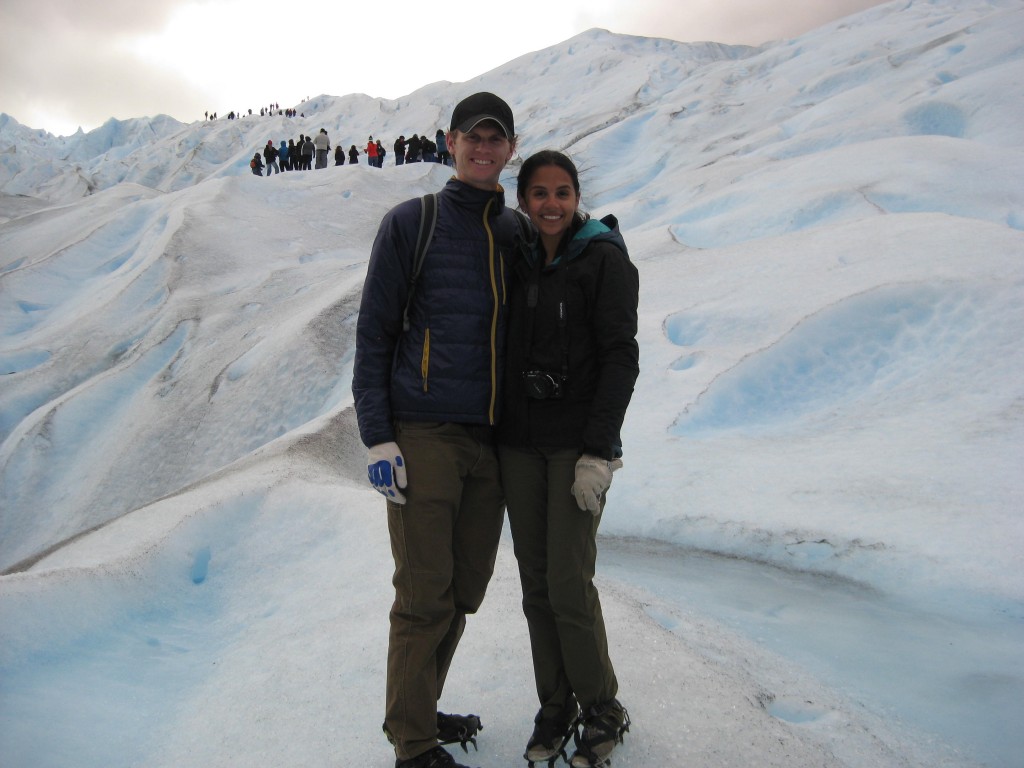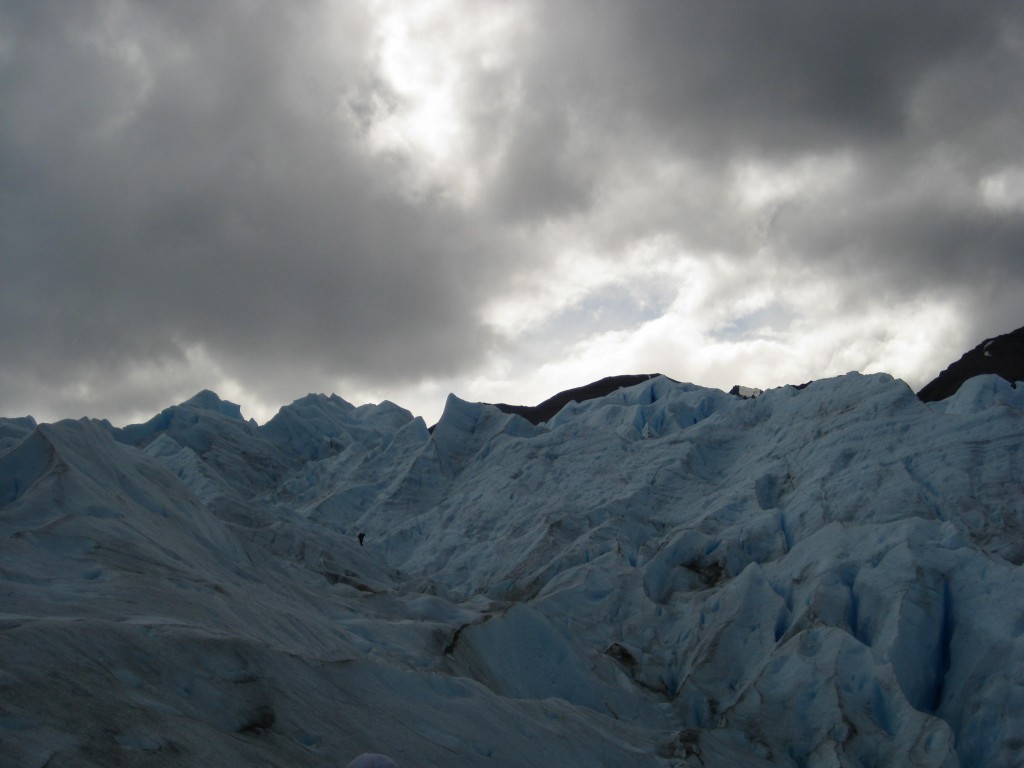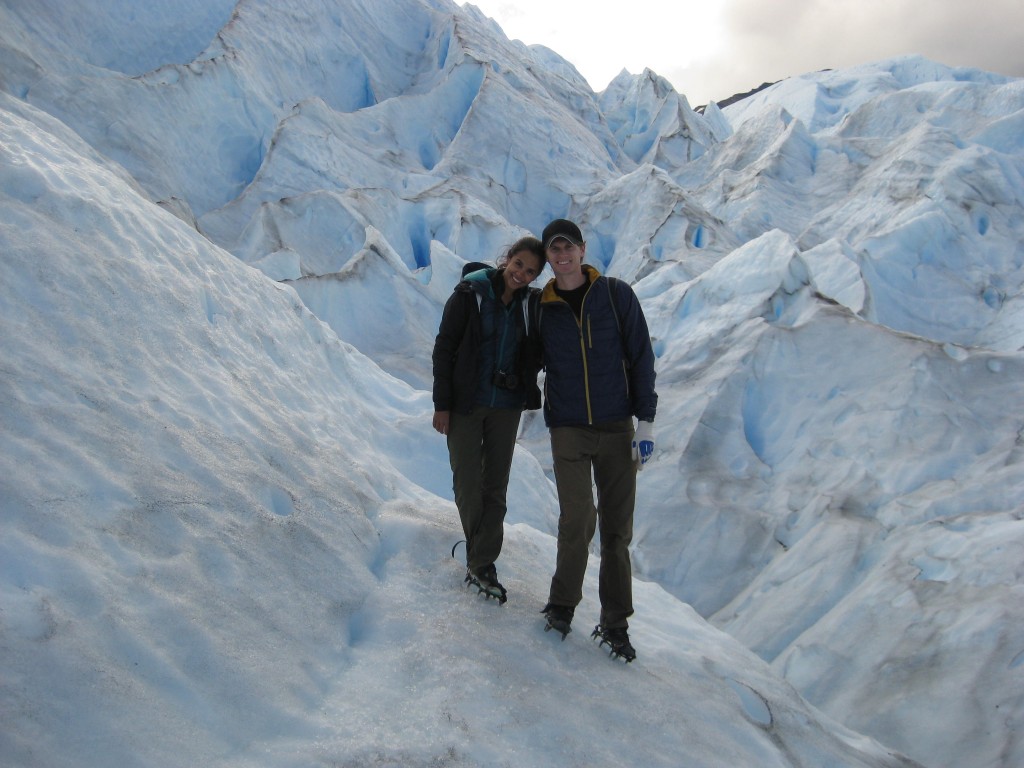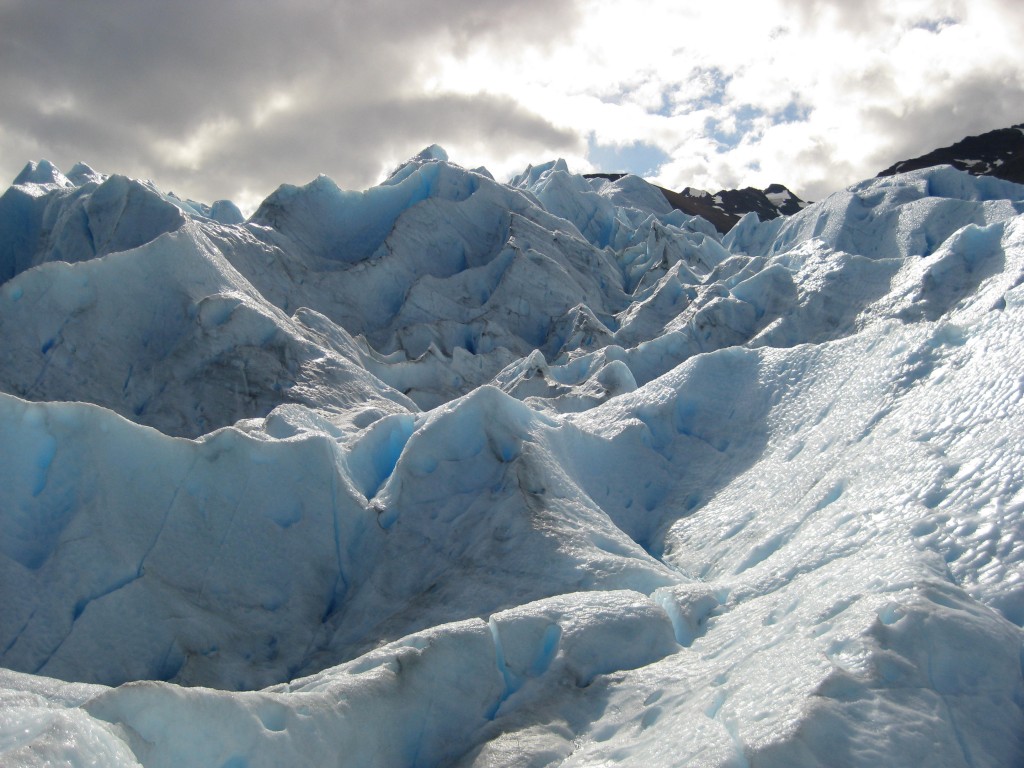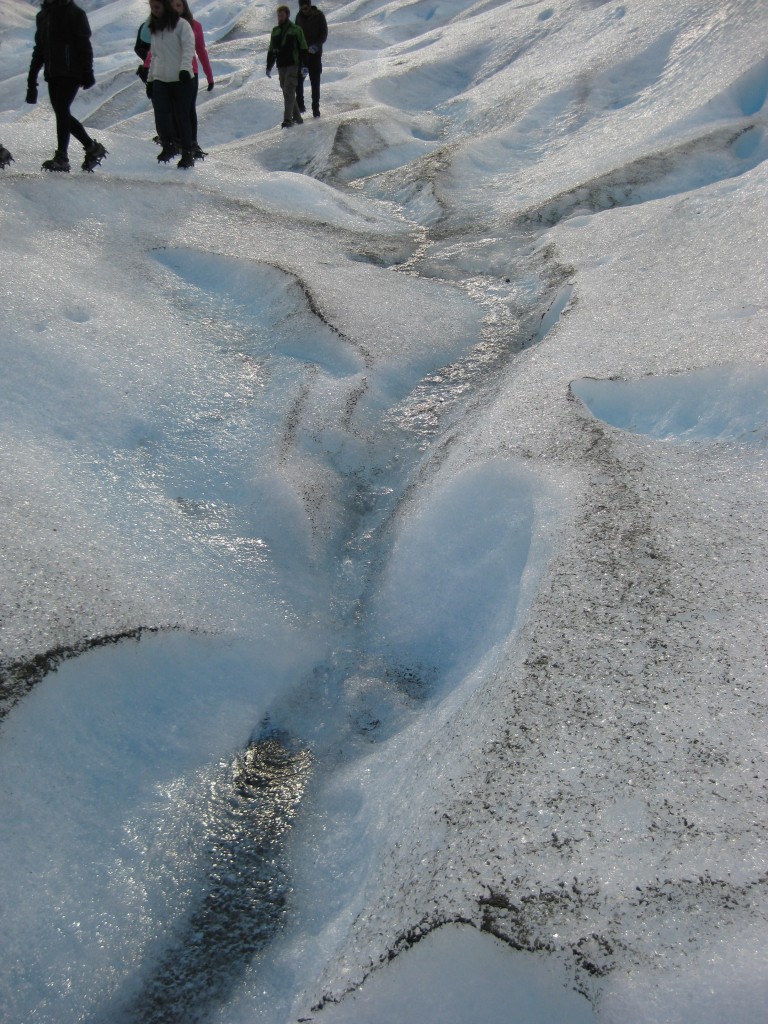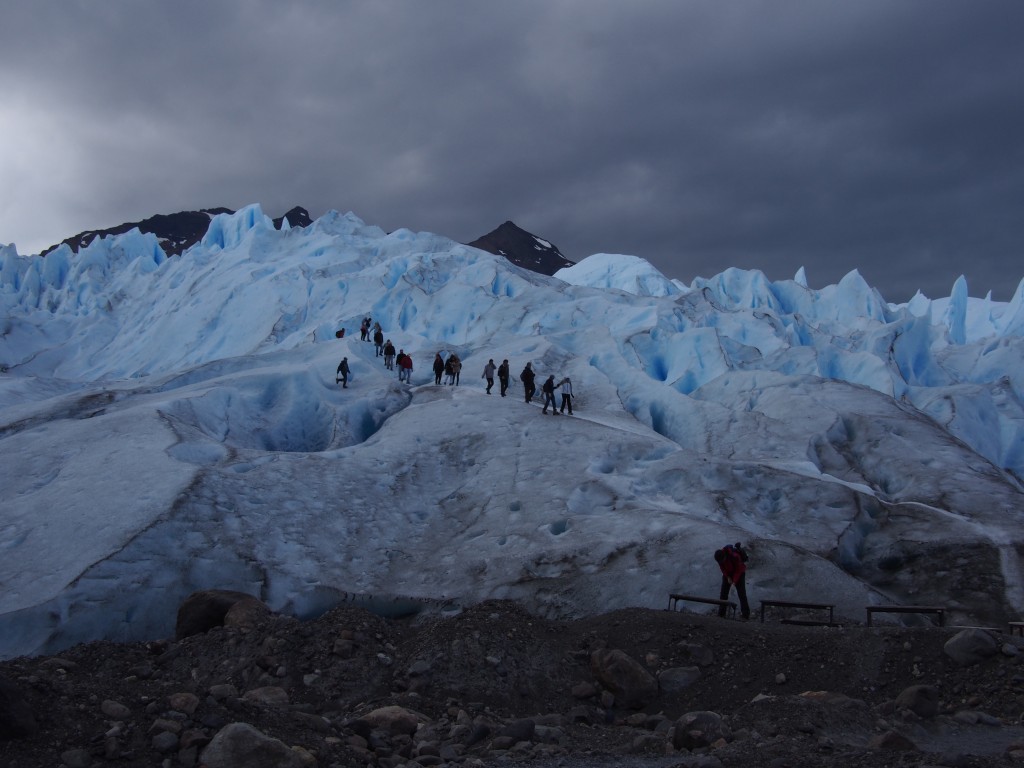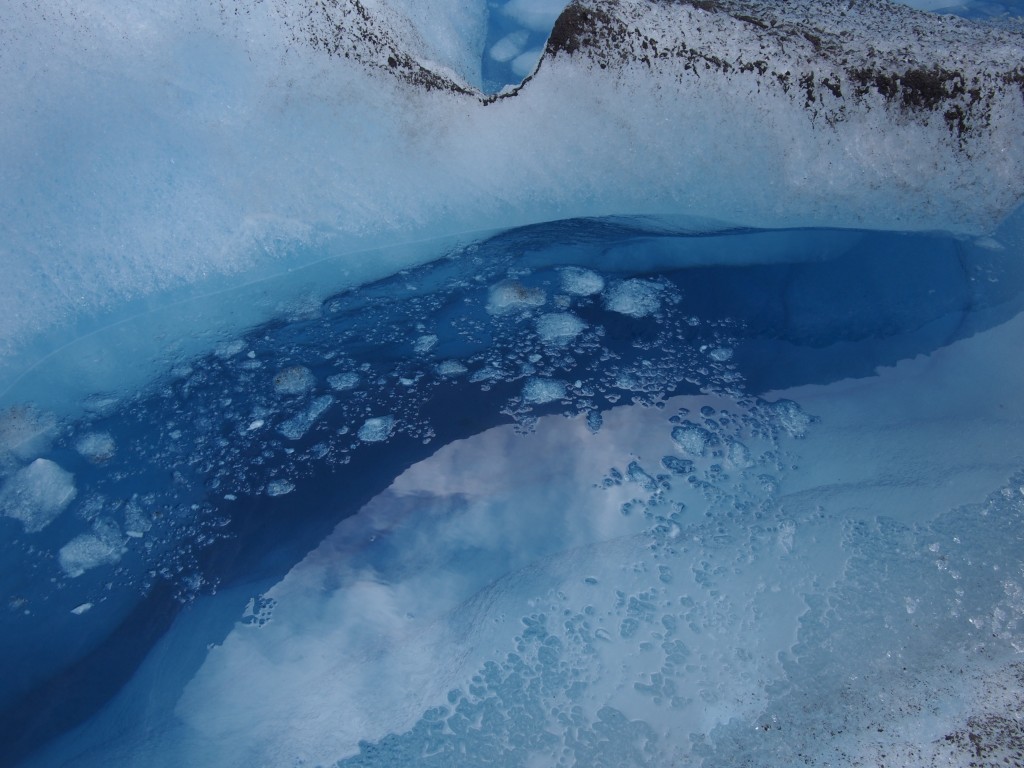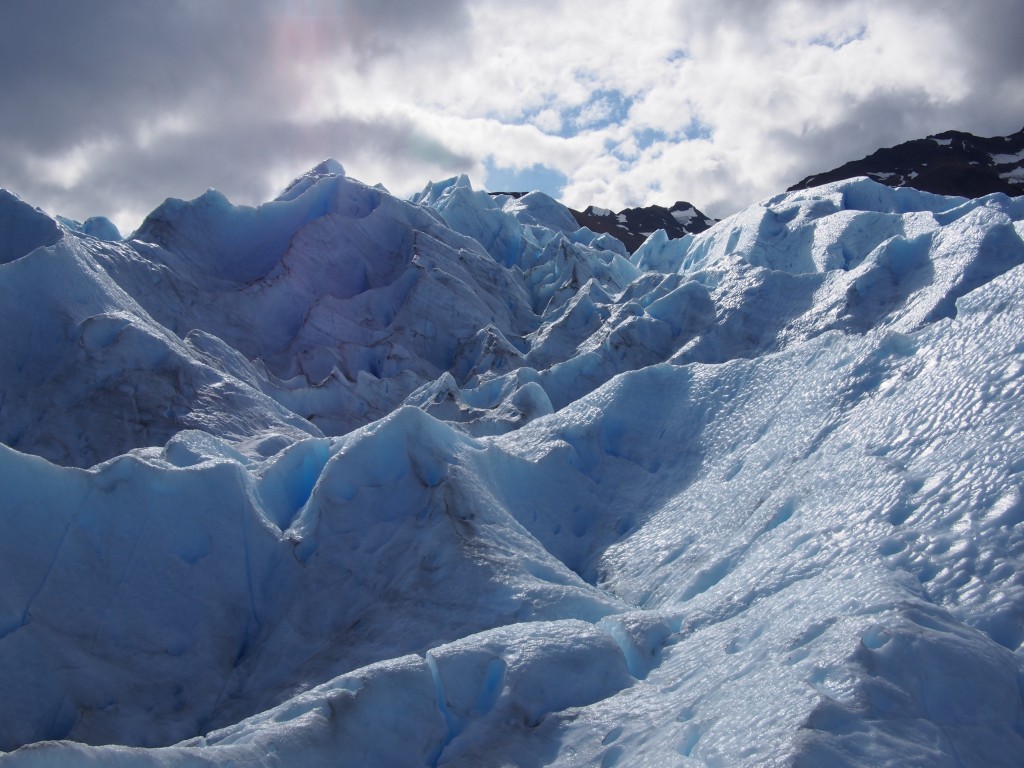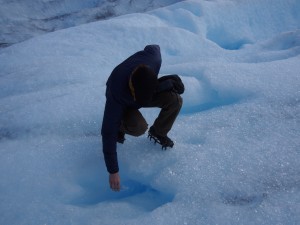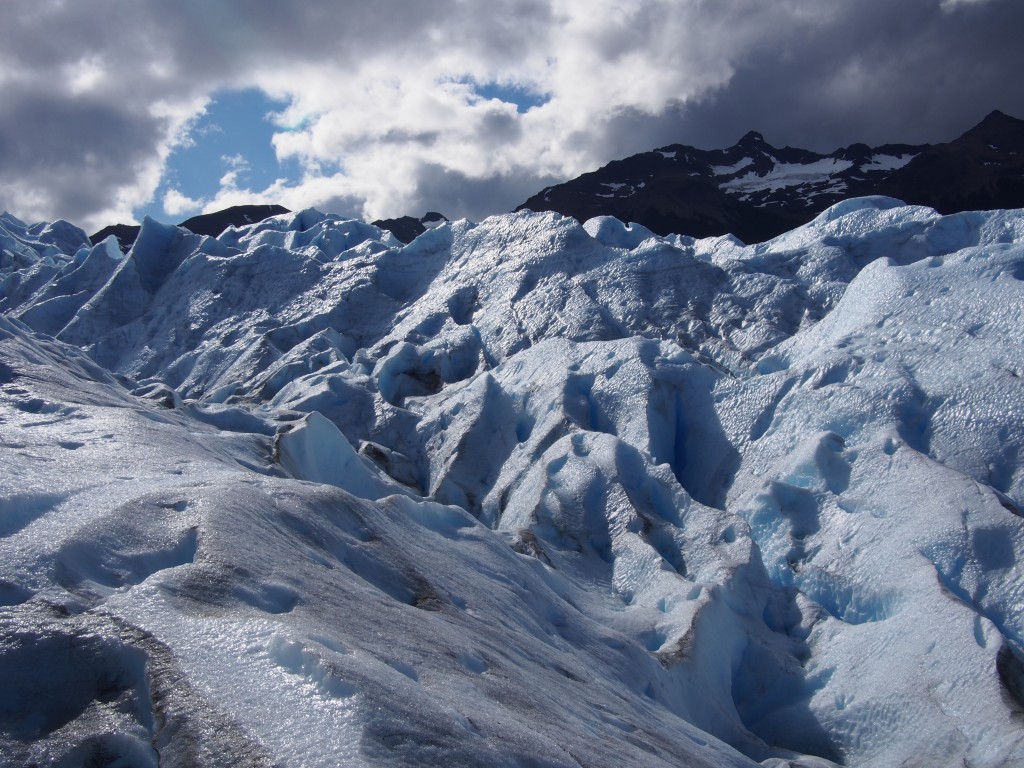Brian here again. Argentintine Patagonia, take II, let’s dive in: January 16th was a travel day. After breakfast we caught the bus from El Chalten to El Calafate. Rachel and I left A&R at our hotel, and explored the city a little. For dinner we went to a place called Pura Vida Resto Bar, where we enjoyed huge and delicious lamb pot pies and lamb stews. We also played more hearts… I continued to win (last time I’ll mention it, I promise).
On the morning of the 17th we said goodbye to A&R. They had a flight to catch in the afternoon and we weren’t leaving El Calafate until the 18th, so we’d planned our days differently. As I’m writing this about a month later, I can say we’ve really missed them– they’re awesome traveling companions and it was so wonderful of them to combine their vacation schedule with our travels. Rachel and I then set out to explore the Perito Moreno glacier. The glacier is one of the few in the world that is actively advancing. In the summer months, it can advance as much as 2 meters per day. Due to the active advancement, the glacier “calves” regularly (“calving” in the world of glaciers is a bit different than “calving” on the ranch… this one is more enjoyable to watch (too much information?)). When a glacier calves it sheds a chunk of ice, which can be accompanied by incredibly loud cracks (breaking off of chunks of ice the size of small buildings) and great splashes in the lake below. Perito Moreno is currently pushing up against a small hill, on which the Argentinians have cleverly built a series of walkways leading to great viewpoints.
Glaciers are incredible things. That said, it’s a little hard to get perspective, so the pictures below can’t begin to capture the enormity of the thing. Fun facts: The glacier as you see it below towers over the water (and us) at an average height of 74 meters (240 ft). The glacier itself occupies approximately 250 square kilometers (94 square miles), is 30 kilometers (19 miles) in length and is about 400 years old. To put that in perspective, while it’s huge and very old, the largest glaciers in the world occupy about 4 times that space and are thousands of years old. It is one of 48 glaciers fed by the southern Patagonian ice field. It is one of only 3 advancing Patagonian glaciers. That was fun, now pictures:
After exploring the walkways for a few hours, we loaded our bus and set out for a nearby dock on the glacial lake. There, we boarded a boat bound for the base of the glacier. At the base we were fitted with crampons, and were led on a 1.5 hour hike on the ice. It was one of the coolest things we’ve ever done.


